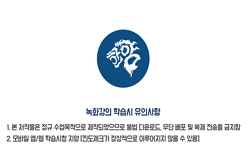이 논문은 공자의 피드백 사례들을 『논어』를 중심으로 조사ㆍ분석하고 있다. 그렇게 함으로써 피드백이 인성교육의 기초로서 작동할 수 있는지 그 가능성을 타진하려고 한다. 이를 위해 ...
http://chineseinput.net/에서 pinyin(병음)방식으로 중국어를 변환할 수 있습니다.
변환된 중국어를 복사하여 사용하시면 됩니다.
- 中文 을 입력하시려면 zhongwen을 입력하시고 space를누르시면됩니다.
- 北京 을 입력하시려면 beijing을 입력하시고 space를 누르시면 됩니다.

인성교육(人性敎育)의 기초로서 공자(孔子)의 피드백 사례 연구 = A Case Study of Confucius’ Feedback as Basics for Personality Education
한글로보기https://www.riss.kr/link?id=A107255623
- 저자
- 발행기관
- 학술지명
- 권호사항
-
발행연도
2014
-
작성언어
-
-
주제어
공자 ; 피드백 ; 인성 ; 인성교육 ; Confucius ; Feedback ; Personality ; Personality education
-
등재정보
KCI등재
-
자료형태
학술저널
- 발행기관 URL
-
수록면
87-113(27쪽)
- 제공처
-
0
상세조회 -
0
다운로드
부가정보
국문 초록 (Abstract)
이 논문은 공자의 피드백 사례들을 『논어』를 중심으로 조사ㆍ분석하고 있다. 그렇게 함으로써 피드백이 인성교육의 기초로서 작동할 수 있는지 그 가능성을 타진하려고 한다. 이를 위해 먼저 『논어』의 여러 기록들 가운데 공자와 제자들간의 교수-학습 과정으로 해석할 만한 구절들을 조사하였다. 그런 뒤 제자들의 물음에 대한 공자의 답변이 피드백과 직접 연관이 있는 문장들, 아니면 그의 발언이 피드백 이론과 관련지어 생각해 볼 수 있는 문장들을 분석하였다. 분석 결과 모두 31개의 피드백 사례들을 추려내 3개의 장에서 다루고 있다. 2장에서는 학문과 관련된 공자의 피드백 사례를 다루고, 3장에서는 공자 피드백의 방법을, 4장에서는 교수 피드백으로 구분해 공자의 피드백 사례들을 재구성해 보았다.
공자는 제자들의 타고난 성정, 능력, 특성, 환경, 교우관계 등을 고려하여 피드백을 했다. 그는 피드백을 통해 제자들이 인간으로서 계속적으로 성장하기를 기대했다. 그의 피드백 종류를 살펴보면 제자들의 장점을 ‘인정’하거나 단점에 대해 ‘조언’하고, 나아가 그들의 됨됨이를 ‘평가’했다. 그런 과정을 통해 제자들의 학구열과 심성을 ‘자극’하고 그들 스스로 자신의 내면을 되돌아보며 깨우치도록 했다.
이 논문에서 조사ㆍ분석한 31개의 피드백 사례는 그 내용의 다양성에도 불구하고 ‘인성’이라는 개념으로 일관되게 정리할 수 있다. 따라서 인성교육이 별도의 윤리ㆍ도덕교육을 통해서만 이루어지는 것은 아니라는 점을 알 수 있다. 이 논문은 교수-학습의 현장에서 피드백, 곧 되먹이는 과정을 통해서도 얼마든지 인성교육이 가능하다는 실마리를 공자가 우리에게 제공하고 있음을 확인한다.
다국어 초록 (Multilingual Abstract)
The present study explores and analyzes the examples of Confucius’ feedback with a focus on Noneo, namely the Analects of Confucius. By doing so, this study attempts to examine Confucius’ feedback in terms of whether it can work as basics for pers...
The present study explores and analyzes the examples of Confucius’ feedback with a focus on Noneo, namely the Analects of Confucius. By doing so, this study attempts to examine Confucius’ feedback in terms of whether it can work as basics for personality education. First of all, the author explored the passages that were thought to represent a teaching-learning process between Confucius and his disciples in the ancient Chinese class book. Then the author analyzed sentences where Confucius’ answers to his disciples’questions are directly related to feedback or where his comments could be considered in line with a feedback theory. The analysis selected out a total of 31 feedback cases, which are covered by three different chapters in this paper. Chapter 2 presents the cases of Confucius’ feedback related to studies. Chapter 3 discuses how Confucius’ feedback was given and chapter 4 reorganizes the cases of Confucius’ feedback with a definition for instructional feedback.
When giving feedback to his disciples, Confucius took into consideration their innate dispositions, abilities, characteristics, conditions and peer relations. He hoped that his feedback would help his disciples to continue their own growth as human beings.
The way for him to give feedback was to "recognize"his disciples for their merits or "advise"them on their demerits and further "evaluate" their personality traits. Through such processes, Confucius "stimulated" his disciples’ passion for learning and encouraged them to learn about themselves by looking deep into themselves.
Thirty one feedback cases explored and analyzed in this study can be consistently characterized by the concept of "personality" despite the diversity of their content. This indicates that personality education is not accomplished merely by teaching ethics and morals. In conclusion, this study gets a clue from Confucius that a feedback process can be effective enough for personality education to work in teaching-learning settings.
동일학술지(권/호) 다른 논문
-
어린이 德性 擴充을 위한 人性敎育 학습모형 도출 연구 ─ 조선시대 童蒙敎材를 중심으로 ─
- 한국유교학회
- 김미라
- 2014
- KCI등재
-
- 한국유교학회
- 송인재
- 2014
- KCI등재
-
血氣와 心氣에 관한 栗谷學派 氣質變化論 硏究 ─ 栗谷·巍巖·南塘을 중심으로 ─
- 한국유교학회
- 정연수
- 2014
- KCI등재
-
星湖 李瀷의 退溪 읽기와 學派分裂 ─ 星湖와 近畿南人의 학문적 접점과 “道東”論의 괴리 ─
- 한국유교학회
- 정도원
- 2014
- KCI등재




 KISS
KISS






